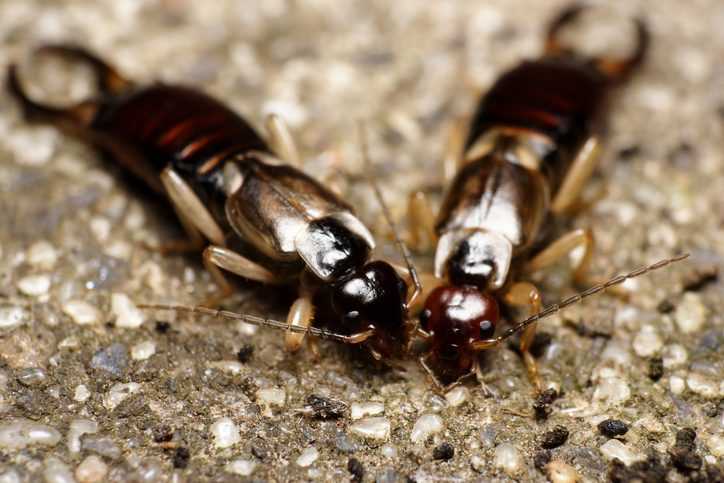If you live in the Pacific Northwest area of the United States, you’re likely already familiar with the colorful variety of fauna and insects that live around there. Chances are you’ve found several of them in your home.
However, if you’re new to Pacific Northwest pest control, or you’re thinking of moving to the area, you should have a strong understanding of common pests you’re likely to encounter regularly, the uncommon, invasive pests, and how you can handle them.
Fortunately, you won’t need to go at it alone! PURCOR wants to help you gain a better understanding of Pacific Northwest beetle identification and provide you with a method for dealing with any unwanted visitors that might find their way into your home!
Pacific Northwest Insects
From the common and simple to the invasive and difficult, there are plenty of little critters that you may encounter around your home or yard in Oregon or Washington.
Bark Beetle
The “bark beetle” is a blanket term, meant to refer to many beetles of a similar species that cause damage to coniferous trees like fir, pine, and spruce trees. These creatures aren’t inherently bad, and under normal circumstances serve forests by breaking down diseased and fallen trees to create room for new, healthier trees to grow in their wake.
Unfortunately, these beetles can also prove harmful to the trees in your yard, so you’ll want to make sure that if you find one on your property, it’s dealt with before there’s a chance of infestation.
Bark beetles are generally around 1 to 3 millimeters in size, with black, brown, or red coloring, and can be found burrowing under the bark of your coniferous tree.
Earwigs
Easily identified by their flat, slender bodies and tail-end pincers, earwigs have a habit of showing up where they shouldn’t: your kitchen cabinets, for example. Different species of earwigs can have different colors, with some featuring a pale brown body with dark marks on the back, and others being red or black. Their bodies have a smooth, leathery quality, and they’ll sometimes have wings that allow for short, momentary bursts of flight.
Brown Marmorated Stink Bug
The first invasive species we’re going to cover has an Asian origin. The brown marmorated stink bug has a distinctly identifiable shield shape with brown mottling. They’re roughly the size (and shape) of a U.S. dime, with alternating light-dark bands of color around its antenna and abdominal edges.
These bugs are often observed eating (and destroying) various fruit crops and other sensitive flora.
Sowbugs and Pillbugs
These two gray little pests are frequently confused with one another due to their mutual size and shape. But pill bugs curl up into a ball and hide inside their hard exoskeleton when in danger, while sow bugs don’t have that ability, and due to their similar scavenger diets, they also both eat dead animals and plant life.
Another distinction is that sowbugs have an oval shape when viewed from above, whereas pill bugs have a more round shape.
Gypsy Moth
Unfortunately, the gypsy moth doesn’t belong in the Pacific Northwest insects catalog, originally hailing from France. Though they prefer to feed on the leaves of an oak tree, they’ve been observed to enjoy the leaves of over a dozen other kinds of trees, as well.
The caterpillar stage of the gypsy moth usually catches from its larval form around the time the oak buds start to open for the year. They can grow to 2.5 inches and are most easily identified by the curious growths on their back. The growths are arranged in five pairs of blue spots, followed by six pairs of red spots.
When they transform into moths, the females are white with brown markings, while the males are an assortment of brown tones. Despite having wings, it’s worth noting female moths don’t fly.
If you want to identify their eggs, look for fuzzy, light brown patches on trunks, branches, or even firewood, though you may also notice them in areas sheltered from the weather, as well as on lawn furniture.
Emerald Ash Borer
Native to Asia and Russia, this hard-to-find beetle is rarely seen—more often, you’re likely to find the aftermath of their feeding frenzies, which look like grooves cut into ash trees. If you do manage to lay your eyes on this highly destructive beetle, it’ll shine with a long, metallic green shell. It also has a red abdomen.
Request Your Free PURCOR Pest Solutions Estimate
Though we’ve obviously only discussed some of the pests hunkering down on your property, fortunately, we do have a quick and easy solution for any related issues you may have.
No matter the infestation you’re facing, PURCOR has the equipment, knowledge, and professionals to locate, identify, and deal with all manner of pests. Whether it’s complete pest control services or setting up preventative traps, you can trust us to remove your pest or help you keep them out, to begin with.
If you want to know more about common pests in the Pacific Northwest and beyond, browse our pest library, or give one of our friendly associates a call.
"*" indicates required fields
"*" indicates required fields




